As winter approaches, the demand for hot water heaters in households is increasing. Hot water heaters provide hot water to various faucets connected to devices inside the house, such as showerheads, bathroom sinks, and kitchen sinks.
On average, every modern household today owns at least one hot water heater and uses it daily. However, there is one task related to the device that many users tend to overlook, which is cleaning the hot water heater.

A hot water heater is a frequently used device in the house but rarely cleaned (Illustration photo)
Experts recommend cleaning hot water heaters 1-2 times per year, and users can easily clean their hot water heaters at home with a few simple steps.
Steps to clean a hot water heater at home:
Below are the steps for cleaning a hot water heater as instructed by the websites of manufacturers and distributors. Users can follow these instructions to clean their hot water heaters at home.
Step 1: Prepare the tools
The first step in the cleaning process is to prepare the necessary tools. The recommended toolkit includes disassembly tools, cleaning tools, and replacement parts (if necessary). Specifically, the disassembly tools include a voltage tester, electrical tape, wrenches, pliers, screwdrivers, etc. The cleaning tools include a descaling solution to remove calcium deposits inside the device. Replacement parts may include elements such as burners, magnesium rods, gaskets, etc. If the internal parts are severely degraded and cannot be thoroughly cleaned, users will need to replace them.
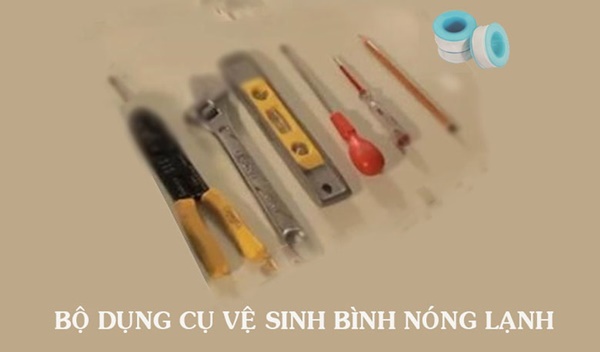
Some necessary tools for cleaning a hot water heater (Photo by Bao Minh company)
Step 2: Disconnect the power supply to the device
After preparing the necessary tools, users need to disconnect the power supply to the hot water heater. This step is crucial to ensure the safety of both the users and the device during the cleaning process.
The power should be turned off by switching off the circuit breaker or unplugging the hot water heater. To ensure that the power is completely disconnected from the device, users can also use a voltage tester to check.
Step 3: Dismantle the hot water heater
For indirect hot water heaters, which are large water tanks usually fixed to the bathroom or toilet walls, users need to dismantle the hot water heater and bring it down to the ground for easier cleaning. This can be done using tools such as pliers and wrenches to remove the screws in the water supply lines. Then open the valve to drain all the water from the tank.
After draining the water from the tank, users should lift the tank from its original position carefully and place it on a dry floor to facilitate deep cleaning of the internal parts.
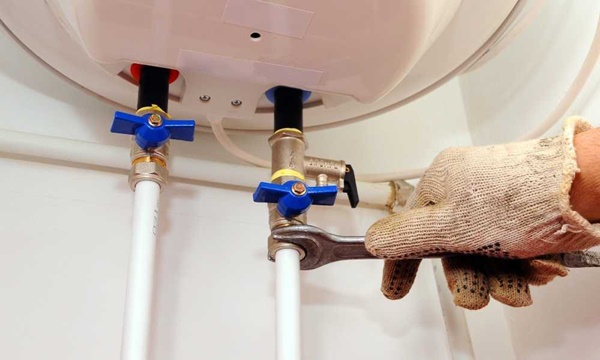
Draining all the water from the tank of a hot water heater (Illustration photo)
Step 4: Remove certain parts of the device
Some models of hot water heaters, particularly newer ones, have temperature control knobs on the surface of the device. Before cleaning, users need to remove these knobs along with the control circuit board inside. This step ensures that the circuit board remains dry during the cleaning process.
If the device has dual protection relay components, these should also be removed to prevent the plugs and the burner pins from getting wet.
Other parts that users should remove for a thorough inspection before cleaning the entire hot water heater include the burners and the magnesium rods. These two parts are considered the most important components of a hot water heater, determining its efficiency and safety.
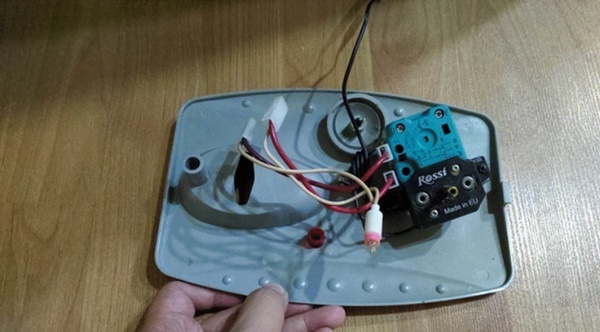
If the hot water heater has a circuit board with control buttons on the surface, it should also be removed before cleaning (Photo by MediaMart)
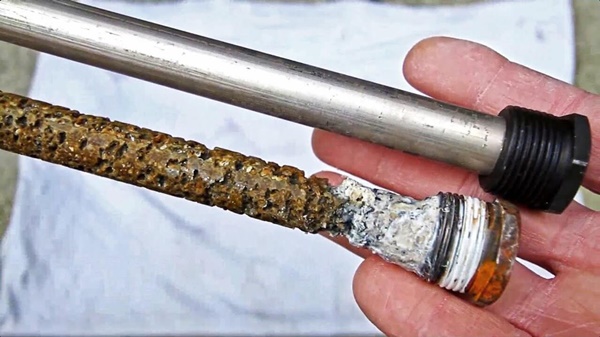
The burners and magnesium rods of the device should also be removed for inspection, cleaning, or replacement (Photo by Karofi)
If significant buildup of calcium deposits is found on the burners and magnesium rods, these parts can be soaked in warm water to soften the dirt and then cleaned with clean water. Alternatively, specialized descaling solutions can be used for cleaning. However, if the burners and magnesium rods are corroded more than 60%, it is best to replace them.
Step 5: Flush the hot water heater
The fifth step, which is almost the final step of the cleaning process, involves flushing the inside of the hot water heater. Experts recommend using a descaling solution, pouring it into the device, and flushing it until the drained water is clear and free of any deposits.
For the outer shell of the tank, simply use a soft, moist cloth to clean the dust around it.
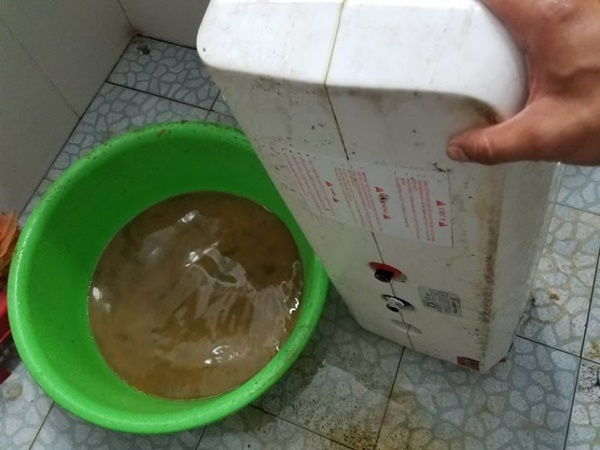
The final step is to flush the hot water heater (Illustration photo)
After ensuring that all the cleaning steps have been completed, users should reassemble the hot water heater as before, including the control panels, knobs, wires, screws, and return the hot water heater to its original position. Once the water lines are reconnected, users can turn on the water supply, turn on the power to the device, and test it.
Why is it necessary to clean the hot water heater?
Many users often overlook the task of cleaning their hot water heaters. However, according to experts, this is an essential task. It directly affects the device’s performance and the quality of the hot water used by the users. Experts analyze that a hot water heater that has not been cleaned for a long time can consume more electricity, become less safe to use, or have internal parts quickly deteriorate.
If families are not confident in their knowledge and skills to clean the hot water heater themselves, they can contact repair or distribution companies for assistance.
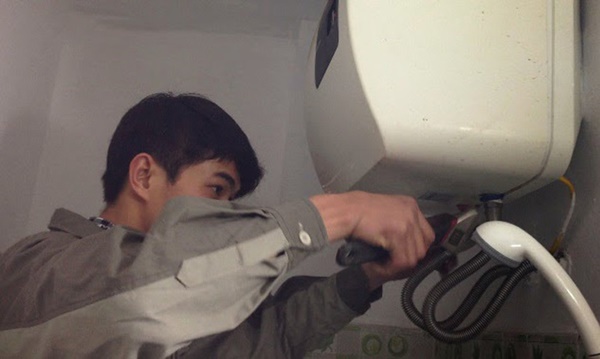
Users can clean and inspect hot water heaters themselves or rely on professional repair companies (Illustration photo)
Here are some signs indicating that users need to clean their hot water heaters:
– The device takes more time to heat the water.
– The hot water temperature does not reach the set level.
– The hot water runs out faster than normal.
– The indicator lights on the heater do not light up.
– The device makes noise when operating.
– The device has been in use for a long time, and the water it produces is not clear, but rather cloudy and yellow.
According to Đời sống và Pháp luật






























